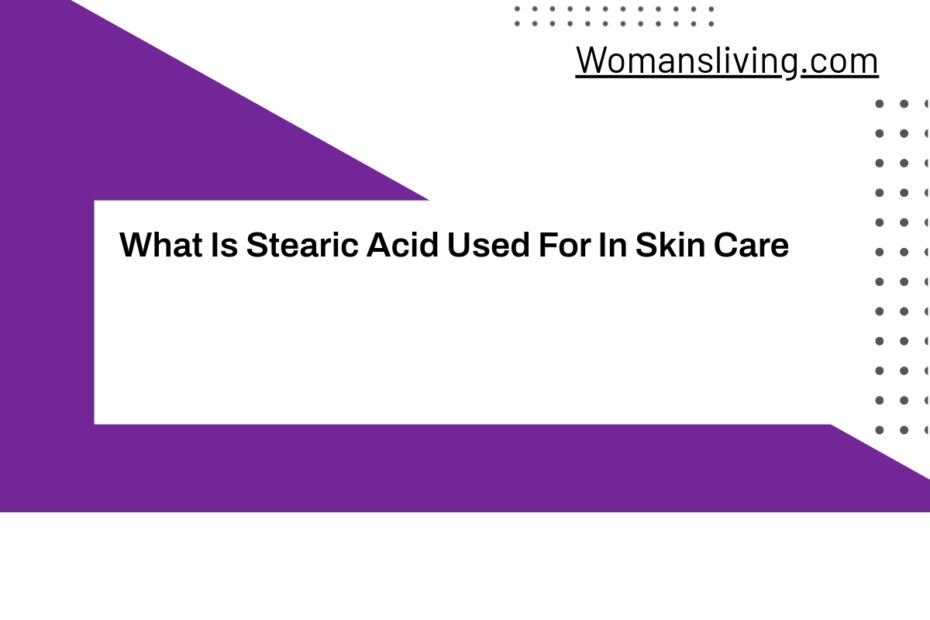What Is Stearic Acid Used For in Skin Care Products?
Stearic acid is a long-chain fatty substance that is found in animal fats. This substance is often synthesized but it is also found naturally in Cocoa butter and Shea butter. It is also used in the formulation of cosmetics including face creams. It provides a smooth, silky feel to the skin when applied.
Although it is not harmful to human health, some people are sensitive to it. Stearic acid is an important ingredient in skin care products. It strengthens the skin’s barrier, keeping out irritants, and moisture.
This substance is also well-tolerated, making it a popular ingredient in morning and night creams. It also works well with many other ingredients including soaps and cleansers however, it should never be used in place of natural oils in skin care products because these will break down the barrier.
This ingredient is important in skin care products as it helps stabilize formulations. Stearic acid is an excellent choice. It is a natural, nontoxic ingredient that is compatible with many other ingredients.
What is Stearic Acid?
This acid is not the same as the Salicylic and Glycolic acids that you are familiar with. Hu explains that Stearic acid can be found in both animal fats and vegetable fats.
It is worth noting that Stearic acids can be synthesized. It’s a moisturizer fat however, Madfes says that it can be found in natural moisturizing oils such as Cocoa butter or Shea butter.
Are sensitive skin people safe from stearic acids?
Stearic acid can be a great choice for sensitive skin. It has been proven to reduce itching and flaking associated with psoriasis.
Stearic Acid Skin Benefits
Although Stearic acids are often used for product formulation purposes, they also have some skincare benefits. Moisturizing agents typically fall under humectants and emollients types. The emollient nature of Stearic acid can soften and smoothen the skin. Other common emollients are ceramides and Jojoba oils.
The skin barrier is the layer that protects the skin from external irritants and natural moisture. The skin cells that make up the skin barrier can be thought of as bricks.
Stearic acid along with other fatty acids, cholesterol, and ceramides are what make the mortar. Stearic acid unlike other emollients is unique in that it works as both an emollient and a surfactant. Petrillo explains that Stearic acid can help oil, dirt, and water bind together and then be easily removed from the skin.
You also get all the moisturizing benefits of Stearic acids which is why it’s a great choice for anyone looking to use it in skin and cosmetic care products as an emulsifier.
What is the natural use of stearic acid?
It is found in natural products that use oil and fat as well as animal fats. The fats are then heated under pressure to extract and purify the Stearic acids.
PETA and the Environmental Working Group list it as an “animal origin substance” because it is derived from animal fats however, certain types like coconut oil are suitable for vegan/animal-free products.
Side effects of Stearic Acid
Experts who spoke to us agreed that Stearic acids are safe and can be tolerated by most skin types. Petrillo warns that there is always the possibility of an allergic reaction or reaction to any ingredient.
